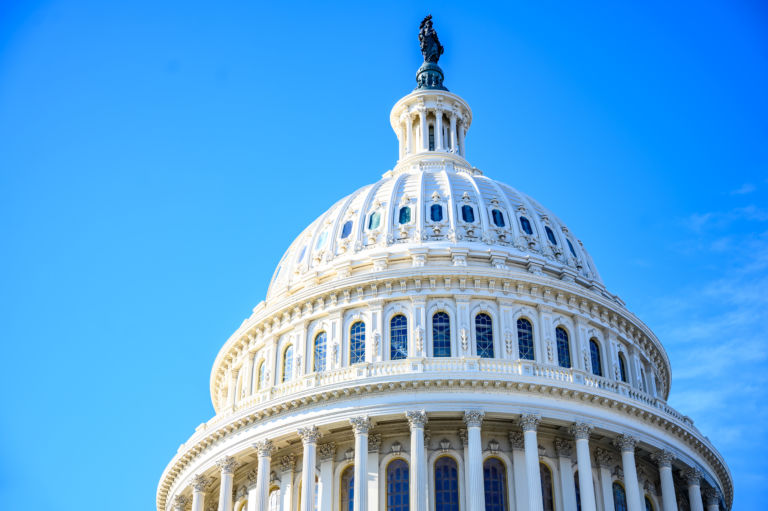What is at stake in the states’ dispute with the U.S. Environmental Protection Agency’s "Clean Power Plan" (CPP)? The U.S. Supreme Court just granted an emergency application from the states to stay the implementation of the CPP.
The main thing is, a major, crippling regulatory takeover has been at the very least delayed, and I hope it may eventually be averted altogether.
As this newsletter explained last summer, the proposed regulations would:
- impose at least $366 billion in costs
- hit residents in 43 states with double-digit percentage increases in their electricity bills
- cost consumers and businesses $41 billion to $73 billion or more for electricity per year
- prematurely shutter 45,000 megawatts of coal-fired power generation capacity — more than New England’s entire electric generating capacity — and as much as 169,000 megawatts if the EPA cannot legally allow all options it specified for compliance.
- shut down 68,000 megawatts of fossil fuel electric generating capacity
- lead to widespread rotating blackouts in parts of the country
But the benefits … what would the offsetting benefits be? This:
- the Clean Power Plan would only reduce temperatures by 0.018 degrees Celsius by 2100
The emergency stay application from "29 states or state agencies"* pointed out a reckless game the EPA was playing with its regulatory diktats, pitting the time and cost to implement them vs. the time it takes for court challenges against them to proceed. Here are the opening paragraphs (emphasis added):
This Court’s decision last Term in Michigan v. EPA, 135 S. Ct. 2699 (2015), starkly illustrates the need for a stay in this case. The day after this Court ruled in Michigan that EPA had violated the Clean Air Act ("CAA") in enacting its rule regulating fossil fuel-fired power plants under Section 112 of the CAA, 42 U.S.C. section 7412, EPA boasted in an official blog post that the Court’s decision was effectively a nullity. Because the rule had not been stayed during the years of litigation, EPA assured its supporters that "the majority of power plants are already in compliance or well on their way to compliance." Then, in reliance on EPA’s representation that most power plants had already fully complied, the D.C. Circuit responded to this Court’s remand by declining to vacate the rule that this Court had declared unlawful. See Per Curiam Order, White Stallion v. EPA, No. 12-1100, ECF 1588459 (Dec. 15, 2015). In short, EPA extracted "nearly $10 billion a year" in compliance from power plants before this Court could even review the rule, Michigan, 135 S. Ct. at 2706, and then successfully used that unlawfully-mandated compliance to keep the rule in place even after this Court declared that the agency had violated the law.
To recap: the EPA got an illegal rule around judicial review by forcing compliance on power plants while the rule was still being challenged in courts. Eventually, the courts found the EPA in violation of the law, but because the EPA had successfully forced enough power plants to comply with their illegal rule, the court decided to allow the illegal rule to remain in effect.
Continuing:
In the present case, EPA is seeking to similarly circumvent judicial review, but on an even larger scale and this time directly targeting the States. In sworn declarations submitted to the D.C. Circuit below, numerous state regulators describe the Plan as the most far reaching and burdensome rule EPA has ever forced onto the States. Relying on five words in a rarely-used provision of the CAA– "best system of emission reduction"–EPA claims the authority to require States to achieve massive carbon dioxide emission reductions that EPA has calculated based on "shifting" electric generation away from fossil fuel-fired power plants to other sources of energy–such as wind and solar–that EPA prefers. 80 Fed. Reg. at 64,726. And because there is no way to meet the Plan’s targets solely by making performance improvements at fossil fuel-fired power plants, it is undisputed that the Plan will force a massive reordering of the States’ mix of generation facilities.
Indeed, the Plan is presently compelling States and regulated entities to take irreversible actions–amending state laws and regulations, making irrecoverable expenditures, and undertaking planning and investment decisions, including retiring plants. Thus, the Administration has freely admitted that the Power Plan is designed to "aggressive[ly] transform[] . . . the domestic energy industry."
George Mason law professor Michael S. Greve summarizes the application succinctly, calling its introduction the "Chief-they’re-laughing-at-you opening paragraph." The application argues that (quoting Greve):
- EPA’s rule "isn’t remotely legal"
- despite that, states and utilities have to "undertake massive planning and investment decisions now"
- EPA’s rule "impermissibly commandeers states"
- the Supreme Court would "quite likely grant cert in a merits case and overturn EPA" — but that would happen "years from now, when it’s too late"
- and all this "has become EPA’s m.o."
The boastful brazenness of this federal agency is not just a significant threat to the economy of the nation and individual states now; it also represents a serious existential threat to constitutional governance going forward. This stay was of critical importance (and distressing insofar as it was granted by only a 5-4 majority rather than 9-0).
This agency’s approach also shows another reason, a very compelling reason, why Congress needs a REINS Act (it has passed the House, but still awaits action in the Senate). When the executive branch deliberately wields legislative power so aggressively it can succeed by "beating the clock" of judicial review, we are on the brink of constitutional crisis.
* That "or state agencies" is a curious addendum. North Carolina is one of two states there not represented by a counsel for the state; namely, Attorney General Roy Cooper. Protecting North Carolina’s interests in his absence are Sam M. Hayes, Craig Bromby, and Andrew Norton of the N.C. Department of Environmental Quality.
Click here for the Rights & Regulation Update archive.
You can unsubscribe to this and all future e-mails from the John Locke Foundation by clicking the "Manage Subscriptions" button at the top of this newsletter.


